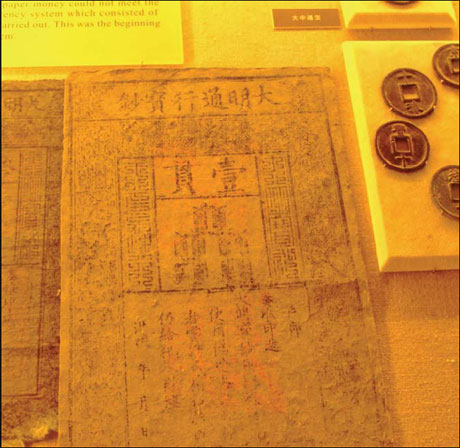Mulberry money

| Banknotes issued during the Ming Danasty (1368-1644) were made of mulberry bark. Feng Jun / For China Daily |
Banknotes used during the Ming Danasty (1368-1644) are going on display at the British Museum in London next month.
After seizing power from the Mongol rulers of China, the Ming rulers tried to reinstate bronze coins. However, there was not enough metal available for this, and paper money, made of mulberry bark, was produced.
These banknotes continued to be issued by the Board of Revenue during the period, but inflation quickly eroded their value. The effect of inflation was so devastating that state-issued banknotes were regarded with suspicion for many years. It was not until the 1850s that a Chinese emperor dared to issue banknotes again.
The Chinese writing along the note pictured above reads (from right to left): Da Ming tong xing bao chao and translates as Great Ming Circulating Treasure Note. Below this, the denomination is written in two characters yi guan (one string).
Date: Sept 19
Venue: The British Museum
Website: www.britishmuseum.org
(China Daily 08/24/2012 page37)
Today's Top News
- Xi stresses improving long-term mechanisms for cyberspace governance
- Experts share ideas on advancing human rights
- Japan PM's remarks on Taiwan send severely wrong signal
- Key steps to boost RMB's intl standing highlighted
- Sustained fight against corruption urged
- Xi calls for promotion of spirit of volunteerism































